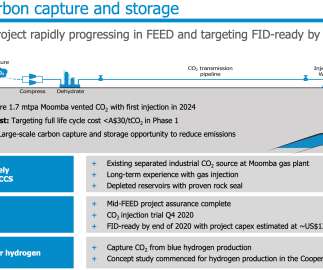Santos reports successful CO2 capture and storage injection trial in Moomba CCS project
Green Car Congress
OCTOBER 26, 2020
Ultimately, the Moomba CCS Project has the potential to store up to 20 million tonnes of carbon dioxide per year. Experts, including the International Energy Agency (IEA) and the Intergovernmental Panel on Climate Change have identified CCS as a critical technology to achieve the world’s climate goals.
























Let's personalize your content